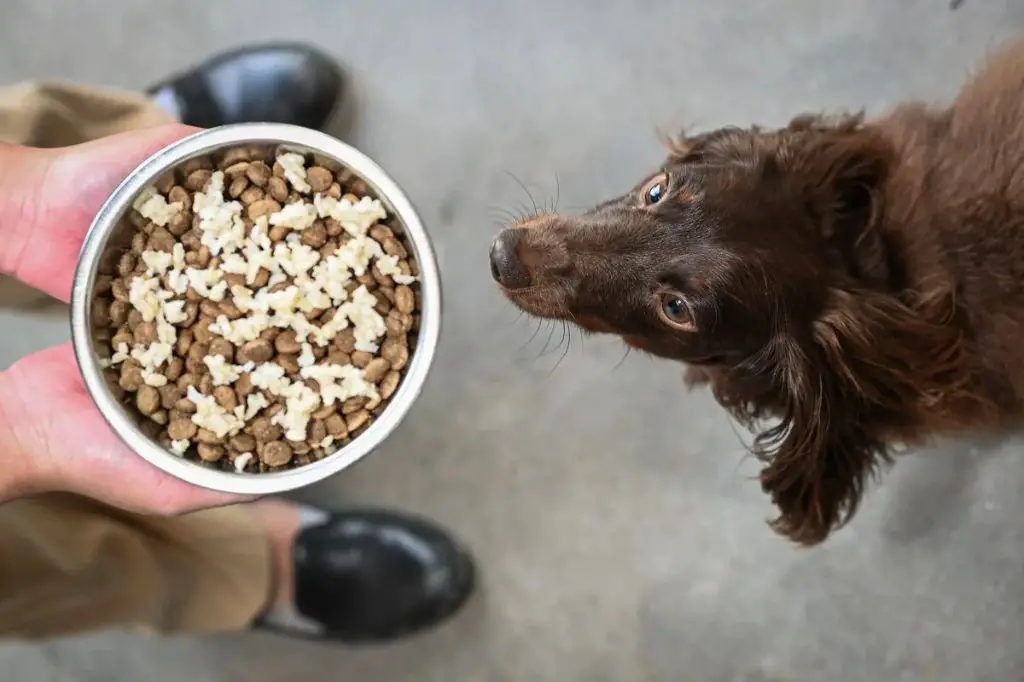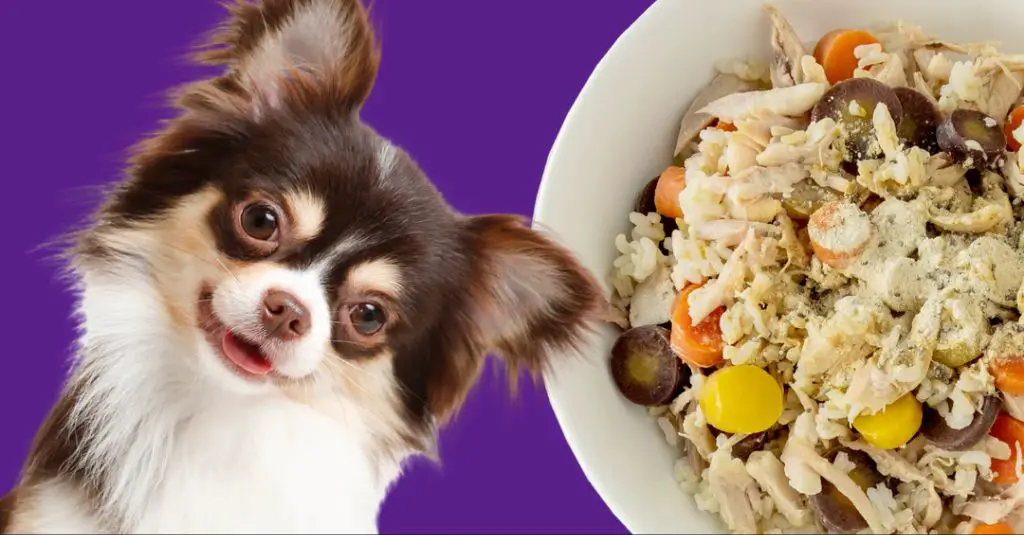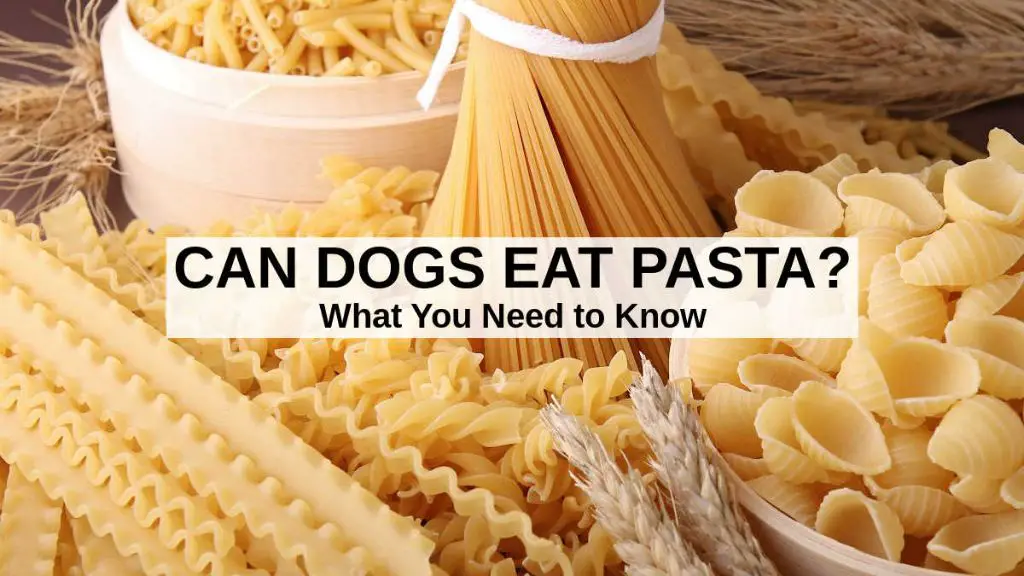Introduction
Many dog owners wonder if they can feed their canine companion pasta instead of the more traditional rice. Both pasta and rice serve as excellent sources of carbohydrates and can be part of a balanced home-cooked diet for dogs. The main considerations when substituting pasta for rice are the differences in nutrients, calories, digestibility, and serving methods.
In this article, we’ll compare and contrast rice and pasta’s nutritional profiles. We’ll also discuss how to serve pasta to provide dogs with the benefits while avoiding potential downsides. By the end, dog owners will understand if and how pasta can stand in for rice in their pup’s diet.
Nutritional Comparison
Both pasta and rice are good sources of carbohydrates. Pasta is commonly made from wheat flour while rice is a cereal grain. Here’s how they compare nutritionally:
Carbohydrates: Pasta contains more carbs than rice – about 70g per cup of cooked pasta vs. 45g per cup of cooked white rice. Rice has a lower glycemic index so the carbs are digested more slowly.
Fiber: Pasta contains about 3g of fiber per cup cooked, while rice has less than 1g. So pasta offers more fiber.
Protein: Rice contains more protein than pasta, with 4-5g per cooked cup compared to around 3g in pasta.
Fat Content: Plain pasta contains minimal fat, while rice has even less. So they are both very low fat options.
Overall, pasta and rice are both good sources of carbs and low in fat. Pasta offers more fiber while rice provides more protein. But they have relatively comparable nutritional values.
Carbohydrates
Both pasta and rice are good sources of carbohydrates for dogs. Carbohydrates provide dogs with energy, fiber, and nutrients. Rice contains more carbohydrates and calories than most types of pasta.

Carbohydrates should make up 50-70% of a dog’s diet. Pasta and rice contain simple starches that are easy for dogs to digest. When choosing pasta or rice for your dog, opt for whole grain or brown rice over white rice and whole wheat pasta over refined pasta. The whole grain options have more fiber.
Pasta and rice are low in fat and contain no sugar or salt, making them healthy options to feed your dog. Brown rice and whole wheat pasta have a lower glycemic index, meaning they raise your dog’s blood sugar more slowly compared to white rice and refined pastas.
The ingredients and preparation method influence the carbs. Cook pasta al dente and avoid rice/pasta dishes with high fat or salty ingredients. Overall, both pasta and rice can provide healthy carbs for dogs as part of a balanced diet.
Fiber
Both pasta and rice can provide dogs with dietary fiber. Fiber helps regulate digestion and promotes gastrointestinal health. Rice contains about 0.4 grams of fiber per 100 grams. Pasta, especially whole grain varieties, contains more fiber than rice. Whole wheat pasta contains about 2.5 grams of fiber per 100 grams. So pasta likely provides more of this important nutrient.

The exact fiber content can vary based on the specific type of rice or pasta. But generally pasta wins out over white rice for fiber, making it possible for pasta to promote better digestive health in dogs.
Protein
While both pasta and rice provide little protein, rice contains slightly more protein than typical pasta. A 1 cup cooked serving of pasta provides around 5 grams of protein. In contrast, a 1 cup serving of cooked white rice provides 4.2 grams of protein, while brown rice contains 5 grams of protein.
Rice, especially brown rice, contains more of the amino acid lysine than pasta. Lysine is an essential amino acid for dogs, meaning they must get it from their diet. Pasta’s protein is limited in lysine and methionine, another essential amino acid for dogs.
Since most pasta varieties contain only vegetable protein, they provide an incomplete protein source for dogs. Rice combined with animal protein is a more balanced protein source that better meets dogs’ nutritional needs.
Fat Content

Both rice and pasta are naturally very low in fat. Per 1 cup cooked, rice contains just 0.4 grams of fat while pasta contains 1.3 grams of fat. This minimal amount of fat means that rice and pasta cannot provide all the essential fatty acids a dog needs in their diet.
The Association of American Feed Control Officials recommends that adult dog food contains at least 5.5% fat by weight. Puppies and lactating females have even higher fat needs. This ensures dogs get the omega-3 and omega-6 fatty acids required for skin, coat, brain, and immune system health.
When feeding pasta or rice as a substantial portion of your dog’s diet, you will need to supplement with other fat sources. Adding an oil, quality cuts of meat, fatty fish, eggs, or a small amount of cheese can help meet your dog’s needs for healthy fats.
Vitamins and Minerals
While pasta contains some vitamins and minerals, it is relatively low in nutrients compared to dog food. Pasta lacks essential vitamins and minerals dogs need in their diet, including:
- Calcium for strong bones
- Phosphorus for energy production
- Iron for oxygen transport
- Zinc for immune system health
- Vitamin B complex for metabolism
- Vitamin D for calcium absorption
If fed too much pasta, dogs would become deficient in these key vitamins and minerals over time. You would need to supplement with other foods or a multivitamin to prevent nutritional deficiencies.
Digestibility
When it comes to digestibility, both rice and pasta are relatively easy for dogs to digest. However, rice generally has a slight edge as it is a bland, easily digestible carbohydrate that is gentle on a dog’s stomach.
Pasta, although still digestible for dogs, contains more fat and is more processed than plain rice. The additional fat and processing can sometimes lead to minor stomach upset in some dogs if fed in large quantities. Dogs that have sensitive stomachs may have an easier time tolerating plain rice versus pasta.
Overall, for a healthy dog, both pasta and rice can be digested and absorbed effectively. But rice may be the gentler option, especially for dogs with gastrointestinal sensitivities. It’s best to introduce any new foods like pasta gradually and keep an eye on your dog’s reaction.
Serving Tips
When serving pasta to your dog, there are some tips to keep in mind:

Cook the pasta first – pasta should always be cooked before serving to dogs. Cook the pasta according to the package instructions until it’s soft and tender. Be sure to drain and rinse with cold water before mixing with any other ingredients.
Mix with other foods – for the best nutritional balance, mix pasta with your dog’s regular food like kibble or canned dog food. Only a small portion of the meal should contain pasta.
Use dog-safe ingredients – when making a pasta dish for your dog, be sure to only use dog-safe ingredients. Avoid seasoning with onions, garlic, or excess salt.
Small portion sizes – pasta should only make up 10% or less of your dog’s total daily calories. For small dogs, a tablespoon or two is plenty. For larger dogs, 1/4 to 1/2 cup pasta max per meal.
Monitor your dog – pay attention to how your individual dog handles and digests the pasta. Reduce the portion if they have discomfort or loose stools.
The Verdict
In moderation, pasta can be a nutritious alternative to rice for dogs. Pasta has a similar carbohydrate and calorie content to rice, and can provide dogs with energy and fullness. Fiber content may be slightly higher in whole wheat pasta varieties. Rice has a higher protein percentage, but pasta still contains a decent amount of plant-based protein.
The fat content in pasta and rice is negligible. For vitamins and minerals, pasta provides iron and B vitamins while rice delivers magnesium, manganese, selenium. Both pasta and rice are highly digestible for dogs.
The portion size of pasta matters, as too much can lead to weight gain. Cook pasta al dente and avoid seasoning that may upset your dog’s stomach. Overall, pasta can add variety to your dog’s diet and give them something different from the usual rice once in a while.